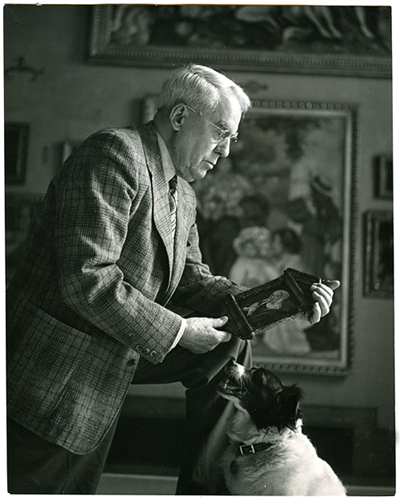|
Reviews of Recent Independent, Foreign, & Documentary Films in Theaters and DVD/Home Video

THE 47TH NEW YORK FILM FESTIVAL In its 47th year, the New York Film Festival continues to showcase masters and wunderkinds familiar to art-house audiences with a main slate culled from other festivals. Here’s an overview from the first week: Documentaries Sweetgrass is an extraordinary piece of visual anthropology that is as beautiful and involving as it is informative about a threatened way of life. While Americans’ image of the West is stuck in polished Hollywood portrayals of cattle drives of the past, ethnographers-with-cameras Ilisa Barbash and Lucien Castaing-Taylor follow a Montana ranching family as they and their hired hands prepare and herd sheep over public grounds for the last time. The film moves with seasonal rhythms around the year in the stunning Big Sky Country, revealing the traditional interdependence of domesticated animals and their practical, experienced guardians within their rugged environment. Other than some brief background provided in the conclusion, the shearing, birthing, winter feedings, steering and chasing of the follow-the-leader animals unfold on screen without narration or explanation. Castaing-Taylor camped out like a cowboy and set up mikes that intimately captured every human and natural sound over far distances. While scampering lambs could have the same general appeal as emperor penguins for city kids and adults, the grizzled herders’ understandably salty language toward the end of the frustrating drive could unfortunately keep some younger audiences and timid school classes away from this enthralling tribute to living history.
I watched the Fourth of July fireworks sitting next to the billboard proclaiming the arrival of the Barnes Foundation to the Benjamin Franklin Parkway in downtown Philadelphia (unveiled ominously in the film), and I had only a bare sense from the national coverage of the colorful characters behind the collection’s transfer or the behind-the-scenes manipulations that sign represented. Former Foundation student and executive producer Lenny Feinberg asked director Don Argott (Rock School) to tell the complicated and fascinating story as forces array against Dr. Barnes’s legacy, chipping away at the very specific and restrictive wording of his will. In addition to the expectedly passionate remembrances, the discovery of rare film footage of Dr. Barnes brings him back to life. While the interviews conducted, and refused, are revealing, it is finally all about the Benjamins. The issue of donor intent is a theme, too, in what could be a companion piece, Megumi Sasaki‘s recent Herb & Dorothy, also an entertaining portrait of unprepossessing art collectors from modest backgrounds with idiosyncratic interests (in their case, conceptual art by living artists). They probably shared with Dr. Barnes a focus and intensity in their personal selections and devotion to their huge collection. It will be up to an enterprising documentarian decades hence to see if their goal of the democratic accessibility of art has been fulfilled, or if their plans suffer the same fate as the likeminded Barnes. For 13 years, the Festival has included a showcase for experimental film in the “Views from the Avant-Garde” section, which this year includes 16 world premieres. The Rage of Pasolini was an avant-garde documentary in Pier Paolo Pasolini’s first iteration in 1963, and it still is, meticulously reconstructed here by Giuseppe Bertolucci (Bernardo’s brother). Pasolini edited newsreels from the 1950s into a stream of images and sequences, creating a mordantly Marxist and frequently prescient criticism of the consumer society that rose on top of the ashes of World War II. Through the mode of documentary as opinionated essay and narrated in melodic poetry and prose, the film is far more pointed and insightful than similarly recent collages of pre-existing footage, including Terence Davies‘s Of Time and the City about Liverpool. Get Yer Ya-Yas Out! (on the same program as the next film) is another notable resurrected blast from the past, even though it’s only a half-hour short. Directors Bradley Kaplan, Ian Markiewicz, and Albert Maysles follow the Rolling Stones on the New York stop of their 1969 “Let It Bleed” tour, on and off stage. (The cameo appearances of a blissed-out Janis, Jimi, and Jerry tug at the heart.) Madison Square Garden is full of excited young folks who now look like extras in Hair, and it is absolutely worth grooving with “Satisfaction” on a big screen, which will be taking full advantage of the newly installed Dolby system in the renovated Alice Tully Hall. Fiction One hundred-year-old Manoel de Oliveira takes a rueful look at the foibles of young love in the hour-long Eccentricities of a Blond Hair Girl. Adapted from a short story by Eça de Queiroz, he includes a tribute to the realist writer, whose works have not been widely read outside Portugal. He simply updates the original late 19th century setting to a contemporary train on its way to the Algarve, the popular coastal vacation spot. Recalling the thematic style of the Six Moral Tales of the younger, octogenarian Eric Rohmer, a dejected young man (played by the director’s grandson Ricardo Trêpa) feels compelled to tell the sympathetic older woman next to him what he warns is his incredible tale of being a victim of love. Seen in flashbacks, Catarina Wallenstein is the mysterious young woman of the title, whose appearance at a window with an ornate Chinese fan right as bells chime seductively evokes a Pavlovian response in the hard-working accountant. How could he not react when their streetscape is filmed so romantically? The Festival’s annual
retrospective series of masterworks rarely seen in the U.S. this year
focuses on China and India. The first week features “(Re)Inventing
China: A New Cinema for a New Society, 1949-1966,” an intriguing survey
of the films spurred by the 1949 founding of the People’s Republic of
China until the restrictions of the Cultural Revolution in 1966. Xie
Jin’s The Red Detachment of Women (1961) was intended as a
10th anniversary commemoration of liberation, and with both intimacy
and sweeping camera work, it surpasses its Uncle Tom’s Cabin-like
story of a slave girl escaping an evil landlord’s brutal control to join
the rebel army. It is also noteworthy as the
basis for the most popular of Madam Mao’s approved operas
during the Cultural Revolution, whose impact was shown in
Yan Ting Yuen’s
2005 documentary Yang Ban Xi: The 8 Model
Works. Those
short shorts sure help the propaganda go down.
Nora Lee Mandel
|


